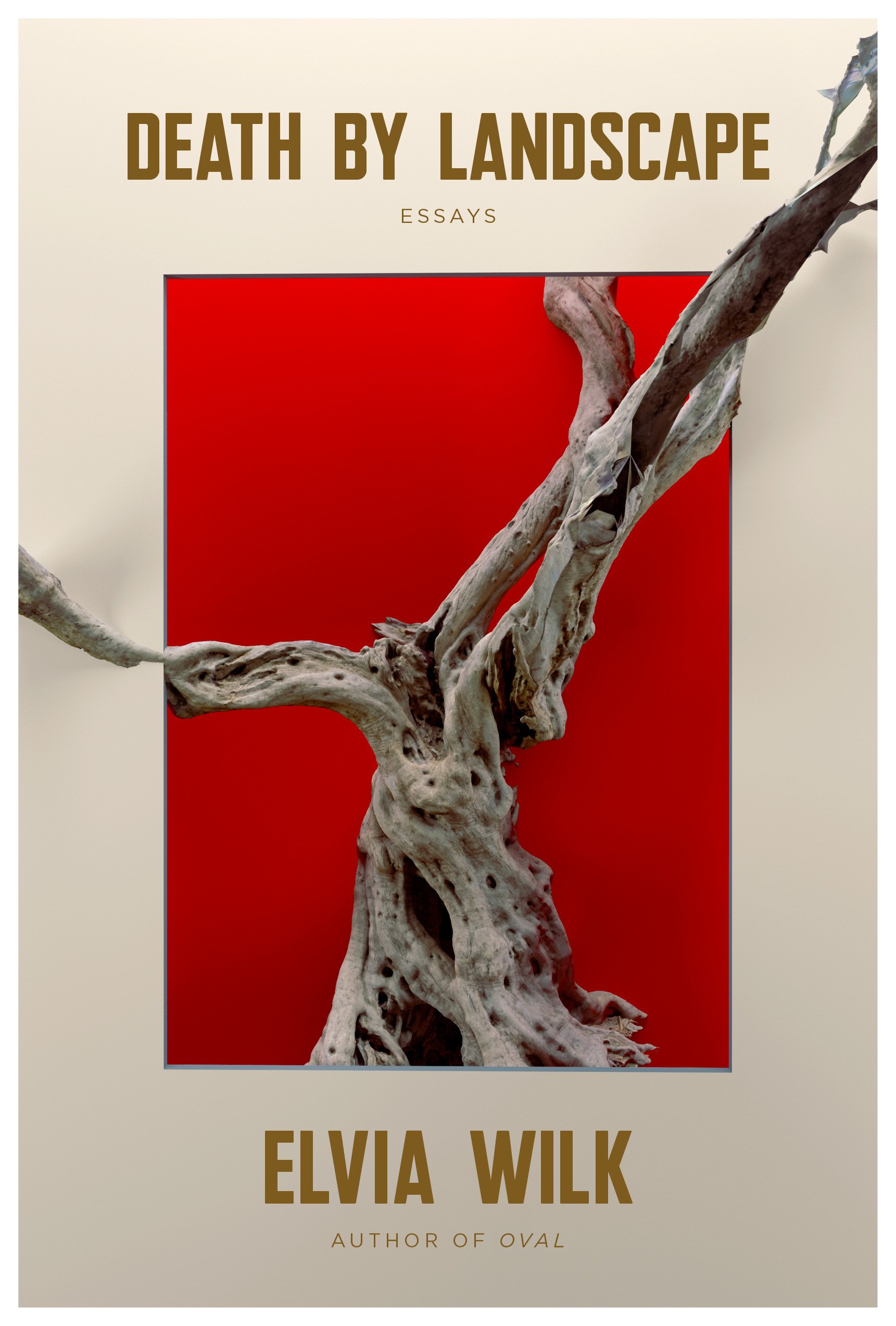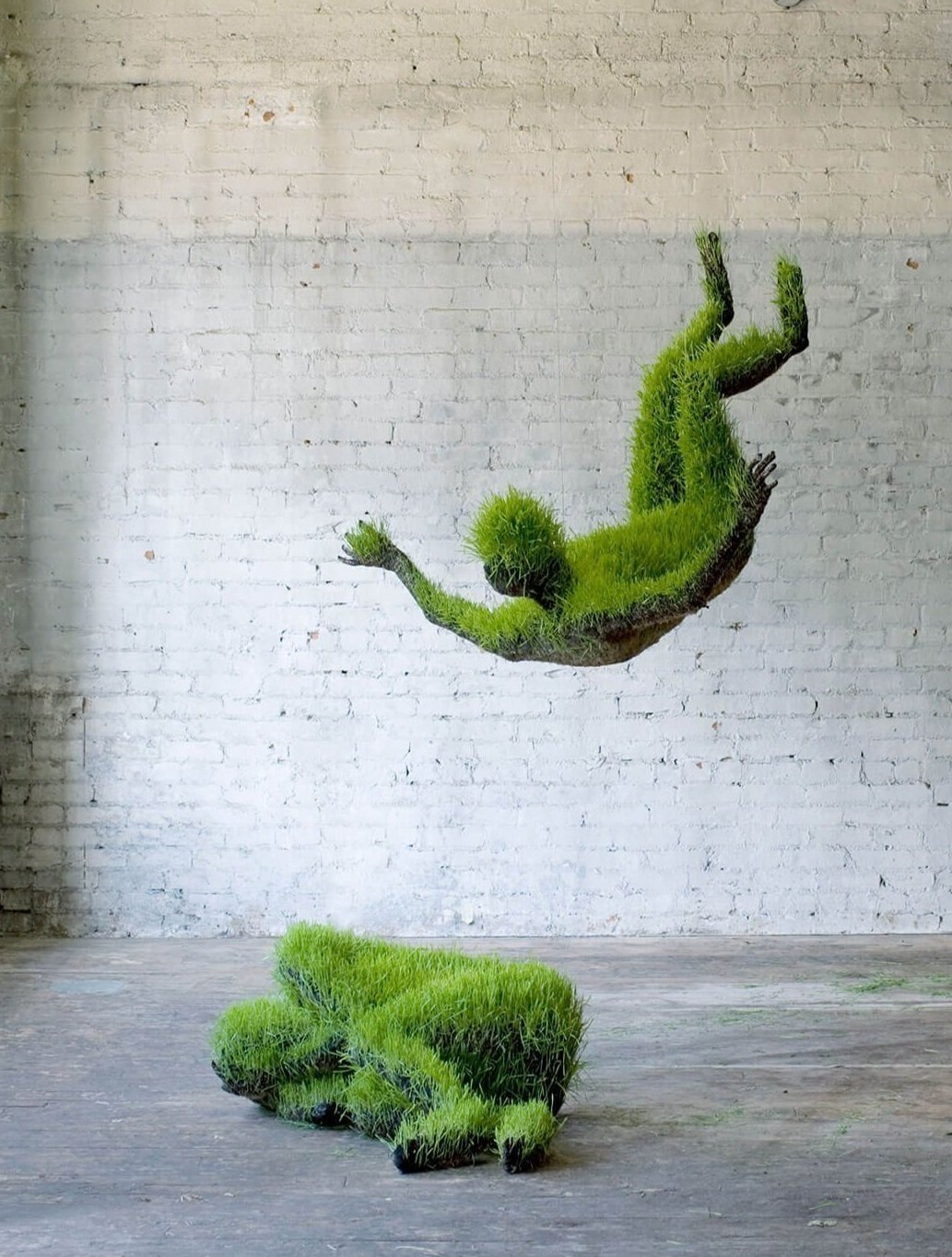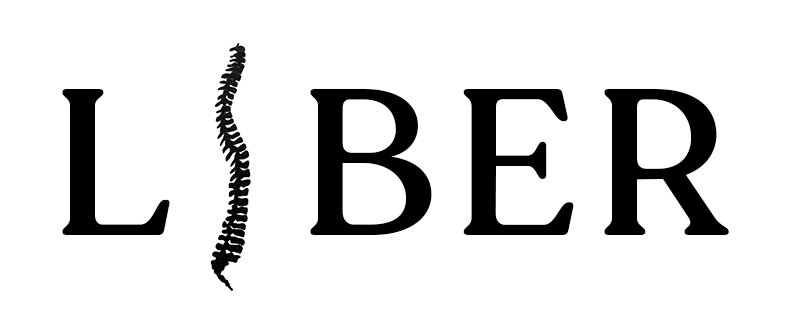
FIFTY PAGES INTO Elvia Wilk’s new essay collection, Death by Landscape, I did something kind of weird: I contacted Elvia Wilk on Instagram. I told her I was reading the book and intended to review it, and I tried to express how it seemed to be explaining my own inner life to me, articulating connections between my current, inexplicably disparate preoccupations. These preoccupations include stories of women turning into plants; Hildegard von Bingen; Anne Carson’s theory of the self and the pleasure-pain of what threatens to undo it (eros, mysticism); the enclosure of bodies and nature under capitalism. I could have said (though I didn’t) that the book made me feel “seen,” not in the colloquial sense of represented or acknowledged but in a weird, psychic way, as if by a seer.
I use the word weird because it is one Wilk returns to over and over in these thirteen intellectually rigorous, unassumingly lyrical, obliquely intimate essays. The first and titular essay unpacks “weirdness” as understood by Mark Fisher in his book The Weird and the Eerie (2016): a space “beyond standard perception, cognition and experience.” The weird and the eerie have to do with things out of place: scrambled causation, instances of “confusing animacy,” such as nonhuman agents or sourceless cries in the woods. In Fisher’s understanding, the weird is close to Freud’s theory of the unheimlich (uncanny), only without Freud’s tendency to reduce every mysterious experience “to a threat to the white man’s (sexual) supremacy.” (For Freud, the ultimate uncanny object is the female genitalia, a thing once familiar, repressed, and reencountered as strange.)
Fisher was inspired to write his book by the early-2000s resurgence of interest in H.P. Lovecraft and what became known as “weird literature”—that is, literature that exists at the edges of horror and sci-fi and evokes the limits of human consciousness, the futility of human reason in a vast and animate universe. The genre term new weird was subsequently formalized by Ann and Jeff VanderMeer as a gesture toward understanding a kind of contemporary liminal fiction which eschews the threatening, racialized others and toxic masculinity of Lovecraft and his contemporaries, while bringing ecological concerns into clearer focus. Wilk argues that the new weird sensibility also carries out what she sees as the failed project of postmodern “systems fiction” (Pynchon, Foster Wallace, et al.)—to decenter the individual human subject. New weird is close to what Bruce Sterling coined slipstream fiction in 1989—writing that follows in the wake of sci-fi, occupying similarly counterfactual spaces but shrugging off its conventions of exposition and world-building. In other words, it’s like science fiction without the science.
In an essay subtitled “Mystical Encounter and the New Weird Divine,” Wilk puts it this way: “New weird is to science fiction what mysticism is to theology. While theologians are preoccupied with analysis and reason, mystics are occupied with experience and self-transformation.” Here she undertakes a close reading of VanderMeer’s Annihilation, in which a scientist enters the mysterious “Area X” and narrates, in increasingly scriptural language, her self-ending encounter with a vast, sporous plant-like entity. Integrating myriad mystical and critical texts, including Anne Carson’s essay “Decreation,” Wilk explores the new weird as a form of apophasis, that is, “the rhetorical strategy of approaching a subject by denying its existence, or denying that it can be described.” As Carson writes, the relationship between the mystic and the written word “is more than a contradiction, it is a paradox.” Weird fiction might be one response to that paradox, one way to write what cannot be expressed in language.
As the mystics know, to encounter the unknowable requires a kind of death. Simone Weil called this death “decreation,” that is, self-undoing. Perhaps it is also a birth into some other (nonhuman) form. Wilk takes the title Death by Landscape from a 1990 Margaret Atwood story of the same name, a story about a girl who vanishes in the woods. Decades later, the vanished girl’s friend believes she was transformed into a tree. The death by landscape is not a death but rather “a transition, a twin becoming of girl and tree.” The surviving friend has become obsessed with collecting landscape paintings of forests in which she thinks she can glimpse her lost friend. These paintings have “no backgrounds [. . .] only a great deal of foreground that goes back and back,” and indeed, in new weird fiction, Wilk sees a counterpart to the way in which modernism in painting subverted traditional distinctions between landscape and figure, background and foreground.
The first section of Wilk’s collection, titled “Plants,” defines a subgenre of new weird in which (usually female) characters become plants, or think they become plants, or are penetrated or inseminated by plants, sometimes, though not always, as a form of resistance to gendered violence. Obvious candidates for this category include Annihilation, as well as Han Kang’s The Vegetarian (a woman in an emotionally abusive marriage stops eating, believes she is a plant), and Karen Russell’s “The Bad Graft” (a woman on her honeymoon is ambivalently impregnated by spores from a tree). Sheila Heti’s recent Pure Colour (a woman, grieving both her father’s death and the imminent apocalypse, undergoes a mystical transformation into a leaf), published after these essays were written, might also be understood in this way. Wilk, whose previous book is the sci-fi adjacent novel Oval (2019), has a deep and wide knowledge which brings forth many other examples—both past and contemporary, sci-fi and otherwise—of stories that evoke a weird disintegration of the plant-human distinction.
What use is this disintegration? Wilk acknowledges that the association of woman with the vegetal, natural, and earthy, has a long and problematic history. This kind of essentialism construes both women and the natural world as passive and porous, and, under capitalism, exploitable. She writes:
As theorists such as Barbara Ehrenreich, Deidre English, and Silvia Federici explain, the delimitation and privatization of (especially the female) body occurred simultaneously with the expropriation of common land and resources throughout the High and Late Middle Ages. A capitalist system requires that, like the natural world, bodies become resources [. . .] whose productive labor is extracted and whose reproductive labor is made invisible.
This process required not only “creating boundaries between individuals” but also creating the dichotomy of human and nonhuman, the limitations of which are now, to put it lightly, coming home to roost. Wilk cites the essay “Anal Terror” by the philosopher Paul Preciado, which argues that patriarchal capitalism emerged through another kind of enclosure which he dubs “anal castration”: “the denial (sealing up) of any orifice that could not be reduced to heterosexual or reproductive functions.” What this process denies is the constant “interpenetration” of all organisms, as well as the interchangeability of the so-called “natural” and “artificial.” All humans are porous, and women are not the only ones that reproduce but rather “people [of all genders] are the makers of one another, and also the makers and products of trillions of other species.” Anal castration also denies a truth on which Wilk insists: that the anus is, in fact, a reproductive organ, not in an immediate (human) sense, but in the sense that it reproduces the earth from which life grows and is nourished. Dying—rotting, being penetrated, consumed, composted by other organisms—is also reproductive. A post-Anthropocene ethics, aesthetics, and erotics of rot “requires no femme fertility, only fertilizer.”
[Wilk] sees the dismantling of gender binaries as inextricable from the dismantling of genres and of body/mind, individual/collective, human/nonhuman, living/nonliving.
EXTINCTION IS THE theme around which these essays spiral. Extinction is understood both literally—in the sense of apocalypse, climate disaster, plague—and also metaphorically, as in annihilation of the self, the aspiration of the mystic, and also perhaps of the future we cannot yet see. Wilk thinks toward this invisible future, which is also, perhaps, the incomprehensible present, and also toward new and liminal ways of categorizing fiction (in the form of written narrative, but also more fluid forms of world- and empathy-building like LARPing and virtual reality). She sees the dismantling of gender binaries as inextricable from the dismantling of genres and of body/mind, individual/collective, human/nonhuman, living/nonliving.
At the center of much of the fiction which draws her attention, Wilk finds what she dubs, after philosopher Timothy Morton, a “hyperobject”: “events or systems or processes that are too complex, too massively distributed across space and time, for humans to get a grip on.” Wilk writes: “Global warming, black holes, and mass extinction are contemporary examples” of the hyperobject. “For medievals: God. The mind can edge close [. . .] understanding parts of it, but never comprehending its totality.” In weird and science fiction, the hyperobject is whatever has made the fictional world different from our own. In VanderMeer’s work, it is Area X. In Doris Lessing’s Memoirs of a Survivor (1974), it is a process of mysterious social collapse referred to merely as “it.” In Lars von Trier’s film Melancholia (2012), it is a rogue planet that both literally collides with Earth and is also a manifestation of one woman’s depression (or vice versa?). The latter example resonates with the way Wilk (and, I think, many depressed people) felt when Covid hit: Here is proof that my depression is not an individual failure; the pathology is in the world.
One response to the hyperobject is paralysis, unconsciousness. In the essay “Extinction Burst,” Wilk describes a “sleeping sickness” which has accompanied her all her life. “When I feel overwhelmed in a certain way,” she writes, “I pass out. It’s not a normal sleep; it’s unavoidable⎯and somehow inhuman. It’s thick and rich and paralyzing. I don’t think of it as sleep anymore; I think of it as crossing over.” While reading Bessel van der Kolk’s best-selling The Body Keeps the Score (2014), Wilk identifies this as a trauma response, but this explanation is unsatisfying to her, and here she seems to join the growing intellectual consensus that the ubiquity of “trauma” as an individualized experience has lost all meaning.

In a different ontological framework, crossing over might not be pathological but rather a form of communication, an “unknown language.” The latter phrase Wilk takes from Hildegard von Bingen, the twelfth-century abbess whose bouts of a mysterious paralyzing illness led her, in her forties, to record the blazing cosmological “visions” she had received since childhood, and then to found a new abbey against the initial refusal of her male superiors. Were these episodes somatic responses to psychic distress? Were they, as the church elders came to believe, evidence of divine will manifesting in Hildegard’s body as a form of Christlike suffering? “Hildegard did not ask whether her illnesses were real,” Wilk writes, “she asked what they were trying to tell her.”
Wilk turns again to medieval mysticism⎯with its “incredible lust for traumatic recollection,” its obsession with Christ’s wounds as a form of body-centered piety ⎯as a fertile site for understanding somatized suffering. She describes a fifteenth-century English devotional manuscript whose first several pages are illustrated with wounds and made to look bloody, “blackened and then splattered with red paint,” and “washed with a pinkish color, upon which are painted repetitive illustrations of tiny dripping slits.” These paintings, “somewhere between figuration and abstraction,” were made to be “kissed, licked, rubbed, scratched at, and cried upon,” as portals to Christ’s bodily suffering. Unlike the contemporary clinical discourse, medieval devotional practices “do not aim to resolve personal trauma. They aim to invoke Christ’s suffering, and dwell on it” as “proof of God’s love.” In other words, “Your pain is not special, which means it is not yours alone to bear.”
TO MY SURPRISE, Wilk responded to my Instagram message within a few hours. She wrote a warm message of a few sentences, including this one: “I’m glad the book made its way to you.” It’s a sentiment in keeping with the way she writes about books as bodily, almost animate. The collection’s third and final section, “Bleed,” describes not only medieval manuscripts made to look bloody but also the “bleed” between art and life, between my subjectivity and yours. Wilk confesses to having “crushes” on paintings; she designs a LARP based on her novel, which soon spirals beyond her ability to control the narrative; she notes the way in which science fiction often acts as prophesy, sometimes as activism.
I would like to go on and on about this very fertile book, but TLDR: You should read it. You will want to reread it. Maybe you will want to kiss, lick, and cry over it; to eat it, break it down and re-form it into new ideas, new writing. As Wilk argues, writing, like dying, is reproductive, “and its product is a circulatable, compostable, regenerative gift.”

